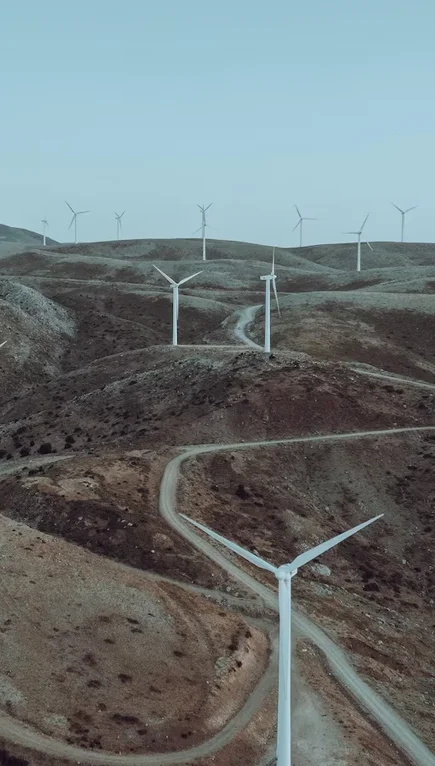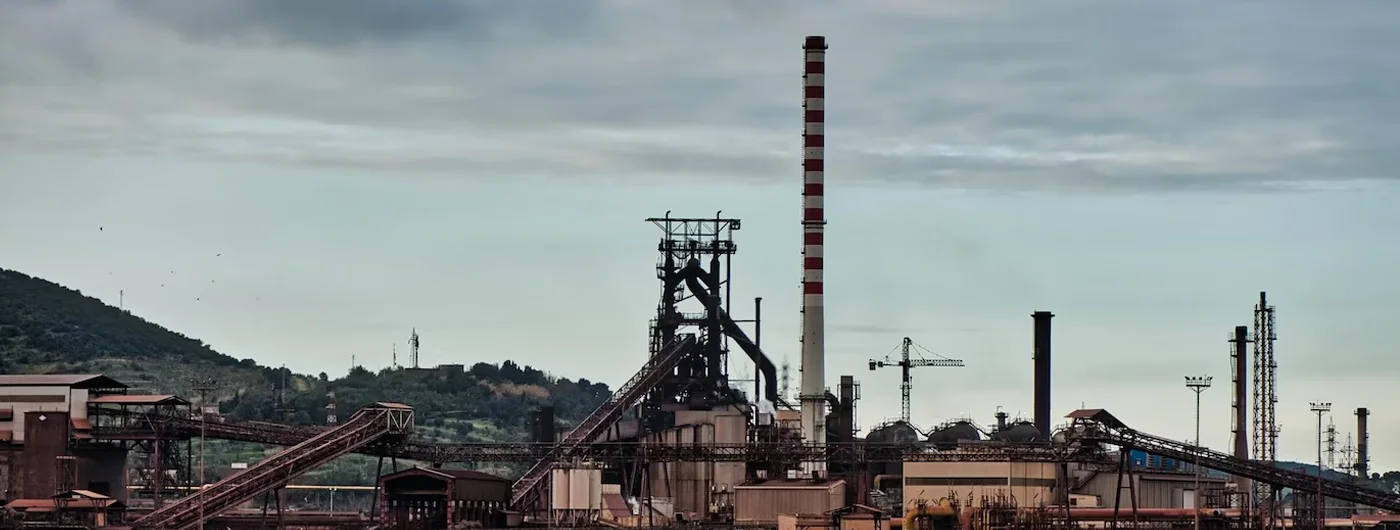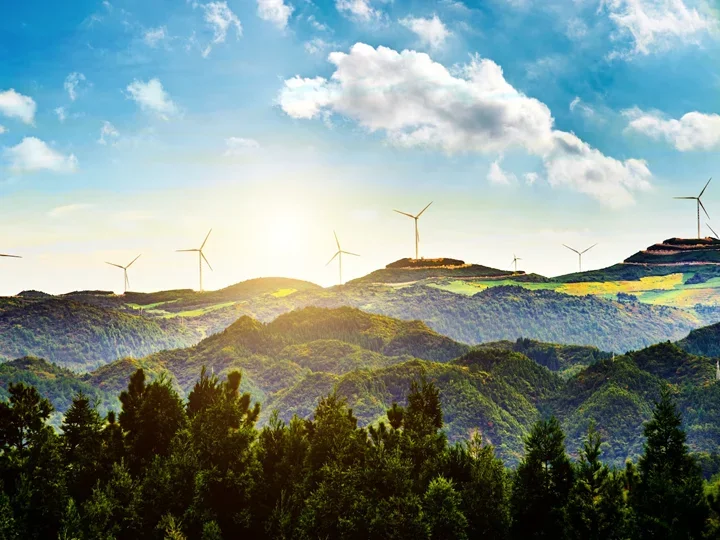Types of Geothermal Power Plants: Harnessing the Earth’s Heat for a Sustainable Future.
1. Introduction
Geothermal energy, as a concept, is far from new. Humans have been utilizing the Earth’s heat for thousands of years, with ancient civilizations taking advantage of hot springs for heating and medicinal purposes. However, the 20th century saw the beginnings of geothermal energy being harnessed in a more systematic way to generate electricity. Today, as the world shifts towards renewable energy sources, geothermal power plants play an increasingly vital role in achieving energy sustainability and reducing carbon footprints.
2. Understanding Geothermal Energy
To fully appreciate the value of geothermal power plants, it’s important to understand the science behind geothermal energy. The Earth is essentially a massive heat engine; its core is hotter than the surface of the sun, and this heat continually flows outward. This heat comes from the radioactive decay of isotopes and the residual heat from the Earth’s formation.
Geothermal reservoirs are areas with high thermal activity, and they can be found at different depths below the Earth’s surface. These reservoirs are sources of geothermal energy, as they contain hot water or steam that can be used to produce electricity.
3: The Concept of Geothermal Power Plants
Geothermal power plants are specialized facilities designed to convert geothermal energy into electricity. This is achieved by drawing heat from the Earth – typically in the form of steam or hot water – and using it to turn turbines that generate electricity.
An essential aspect of geothermal power plants is their environmental benefits. Unlike fossil fuel-based power plants, geothermal plants release minimal greenhouse gases and other pollutants. This makes them a cleaner and more sustainable option for electricity generation.
Moreover, geothermal power plants have the advantage of being highly reliable and capable of producing electricity almost continuously, unlike solar and wind energy which are intermittent in nature.
Retgen’s contribution to the field of geothermal power plants involves not just accessing geothermal energy but doing so in a manner that maximizes efficiency and minimizes environmental impact. The company employs sustainable practices and innovative technologies to make geothermal energy more accessible and profitable, thus contributing to the wider adoption of this renewable energy source.
4. Direct Geothermal Systems
Direct geothermal systems harness geothermal energy for heating and other applications without converting it into electricity. These systems are particularly useful for applications that require a direct heat source.
a. The Direct Use Applications:
Direct use applications include using geothermal hot water for heating buildings, growing plants in greenhouses, or even for therapeutic purposes in spas.
b. Heating Buildings
One of the most common applications of direct geothermal systems is geothermal heating for buildings. This involves using the constant temperature of the ground to heat or cool buildings effectively. Retgen is at the forefront of implementing these systems, ensuring energy-efficient heating solutions that are both economical and environmentally friendly.
c. Agricultural Applications
In agriculture, geothermal energy can be used for drying crops and heating greenhouses. This allows for year-round production regardless of external weather conditions.
d. Industrial Processes
Various industrial processes require significant amounts of heat, and geothermal energy can be a sustainable source for these requirements.
e. Advantages and Disadvantages
Direct geothermal systems have the advantage of being highly efficient and reducing dependency on fossil fuels. However, they are location-dependent and require proximity to geothermal reservoirs.

5. The Hydrothermal Power Plants
Hydrothermal power plants are a type of geothermal power plant that utilizes water reservoirs heated by the Earth’s crust.
- Introduction to Hydrothermal Reservoirs: Hydrothermal reservoirs contain water that has been heated by geothermal activity. These reservoirs can be natural or artificially created.
- Flash Steam Power Plants: Flash steam power plants use high-pressure hot water from the earth to produce steam which drives the generator’s turbines.
- How Flash Steam Power Plants Work: When high-pressure hot water from the reservoir is brought to the surface, it’s pressure decreases and it rapidly turns into steam which can then be used to generate electricity.
- Advantages and Disadvantages of Flash Steam Power Plants: Flash steam plants are efficient but require more water than other types of geothermal plants.
- Dry Steam Power Plants: Dry steam plants use geothermal reservoirs that are already in the form of steam.
- How Dry Steam Power Plants Work: The steam from the geothermal reservoir is directly transported to a turbine which drives a generator.
- Advantages and Disadvantages of Dry Steam Power Plants: Dry steam power plants have relatively low costs but are limited to resources that can provide sufficient steam.
- Binary Cycle Power Plants: Binary cycle power plants use the heat from geothermal water to heat a secondary fluid that boils at a lower temperature than water.
- How Binary Cycle Power Plants Work: This secondary fluid is used to produce steam which can drive a turbine.
- Advantages and Disadvantages of Binary Cycle Power Plants: Binary cycle power plants can utilize lower temperature geothermal resources, but the process is less efficient compared to flash and dry steam power plants.
6. The Enhanced Geothermal Systems (EGS)
Enhanced Geothermal Systems (EGS) are a new type of geothermal power technology that do not require natural convective hydrothermal resources.
- Understanding Enhanced Geothermal Systems: Unlike traditional geothermal resources, which rely on natural high-permeability, EGS can be used in regions with hot rocks but insufficient water through hydraulic stimulation.
- The Technology Behind EGS: EGS technology involves injecting water into hot rock formations to produce steam which can then be used to generate electricity through a turbine.
- Advantages and Disadvantages of Enhanced Geothermal Systems: EGS has the potential to be used in many more locations compared to traditional geothermal systems but is currently more expensive.
Retgen, with its innovative approach, is actively engaged in research and development to bring down the costs of EGS and make it a more widely available renewable energy source.
7. The Geopressured Resources
Geopressured resources refer to deep underground reservoirs that contain hot water and natural gas under high pressure.
- Introduction to Geopressured Reservoirs: Geopressured reservoirs are characterized by the presence of hot brine water and methane under high pressure. These reservoirs are typically found deep below the earth’s surface.
- Utilizing Geopressured Resources for Energy Production: Geopressured resources can be harnessed for electricity generation by tapping into the high-pressure brine to drive turbines. Additionally, the natural gas dissolved in the brine can be separated and used as an energy source.
- Advantages and Disadvantages of Using Geopressured Resources: Geopressured resources offer a renewable energy source and can be highly efficient due to the combined production of thermal energy and natural gas. However, they are location-specific and may come with environmental concerns related to brine disposal.
8. Low-Temperature and Co-produced Resources
Low-temperature geothermal resources are used for direct heating purposes, and co-produced resources refer to the process of using geothermal fluids extracted during oil and gas operations.
- Introduction to Low-Temperature Geothermal Resources: Low-temperature geothermal resources usually range from 50°C to 150°C. These resources are widely used for district heating, agricultural applications, and industrial processes.
- Harnessing Co-produced Resources from Oil and Gas Wells: Co-produced resources involve harnessing the geothermal fluids that are extracted alongside oil and gas. This can be a cost-effective way to produce geothermal energy since the wells are already being drilled for oil and gas extraction.
- Advantages and Disadvantages of Low-Temperature and Co-produced Resources: These methods are advantageous in that they provide a more efficient use of existing resources and can be cost-effective. However, the availability of co-produced resources is tied to oil and gas operations.
9. Emerging Technologies in Geothermal Energy
With the increasing demand for renewable energy sources, there is ongoing research and development in geothermal technologies.
a. Introduction to Innovative Geothermal Technologies:
Innovative geothermal technologies aim to reduce costs, increase efficiency, and make geothermal energy available to a wider range of locations.
b. Advancements in Drilling and Exploration Techniques:
Advanced drilling techniques, such as directional drilling and high-temperature drilling materials, are making it possible to access geothermal resources that were previously unreachable. Retgen, for instance, is at the forefront of developing state-of-the-art drilling technologies that are revolutionizing the geothermal sector.
c. Future Prospects of Geothermal Energy:
The future of geothermal energy is promising, with continual advancements in technology. The integration of geothermal systems with other renewable sources and the development of more efficient and cost-effective extraction methods will likely play a significant role in the energy sector in the coming years.
10. Global Examples of Geothermal Power Plants
a. The Geysers in the United States:
The Geysers, located in northern California, is the largest geothermal complex in the world. It consists of 22 geothermal power plants that generate electricity by tapping into the Earth’s heat. The facility is a prime example of the potential of geothermal energy in contributing to a sustainable energy mix.
b. Hellisheidi in Iceland:
Hellisheidi Geothermal Power Plant is one of the largest geothermal facilities in the world, located in a country that is a global leader in geothermal energy utilization. Iceland uses geothermal energy not only for electricity generation but also extensively for heating purposes due to its abundant geothermal resources.
c. Cerro Pabellón in Chile:
Cerro Pabellón is the first geothermal power plant in South America, located in the Andes mountains of Chile. It showcases the potential for geothermal energy in regions with significant volcanic activity and contributes to Chile’s renewable energy portfolio.
d. Olkaria in Kenya:
Olkaria Geothermal Power Plant is located in the Great Rift Valley of Kenya, an area with significant geothermal activity. It is one of Africa’s largest geothermal facilities and plays a crucial role in Kenya’s ambitions to expand renewable energy generation.

11. The Economic Aspect of Geothermal Power Plants
- Initial Costs and Long-Term Benefits: Geothermal power plants require a significant initial investment, mainly due to drilling and exploration costs. However, once operational, they have low operating and maintenance costs and provide a stable, long-term source of electricity.
- Geothermal Energy and the Job Market: The geothermal energy sector also contributes positively to the job market. It creates jobs in construction, operation, maintenance, and supporting industries.
- Government Incentives and Policies for Geothermal Projects: Many governments offer incentives such as tax breaks, grants, and favorable tariffs to encourage the development of geothermal projects. These incentives play an essential role in making geothermal energy economically viable.
12. Challenges Facing Geothermal Power Plants
- Technical Challenges in Geothermal Energy Extraction: Technical challenges include the difficulty of finding and accessing geothermal resources, and the need for advanced drilling techniques to reach deep reservoirs.
- Environmental Considerations: Although geothermal energy is considered clean, it is not without environmental impact. Issues such as water usage, land subsidence, and the release of greenhouse gases must be managed responsibly.
- Social and Regulatory Hurdles: Social acceptance and regulatory approvals can be hurdles to geothermal projects. Ensuring local communities are involved and benefit from projects is essential for social acceptance. Moreover, navigating the regulatory environment requires thorough planning and compliance.
13. Summary
- Recapping the Types of Geothermal Power Plants: This article has provided an overview of the various types of geothermal power plants, including hydrothermal, enhanced geothermal systems (EGS), geopressured resources, and low-temperature and co-produced resources.
b. The Role of Geothermal Energy in Sustainable Development:Geothermal energy plays a vital role in sustainable development by providing a reliable and renewable source of electricity. With advancements in technology, such as those being pioneered by Retgen, geothermal energy has the potential to be a significant part of the global energy mix, contributing to reduced greenhouse gas emissions and a cleaner environment.
Frequently Asked Questions (FAQs)
A: Geothermal energy is the heat that comes from the sub-surface of the earth. It is produced by the natural decay of radioactive materials and the heat trapped from the earth’s formation. To convert this energy into electricity, geothermal power plants extract hot water and steam from geothermal reservoirs and use them to drive electrical generators.
A: There are several types of geothermal power plants including:
- Flash Steam Power Plants
- Dry Steam Power Plants
- Binary Cycle Power Plants
- Enhanced Geothermal Systems (EGS)
- Direct Use Applications Each type has its own specific method of extracting and utilizing geothermal energy.
A: Generally, geothermal energy is considered to be environmentally friendly as it produces significantly lower greenhouse gas emissions compared to fossil fuel-based power plants. However, there are some environmental concerns such as land use, water consumption, and the release of certain gases and chemicals from the earth’s crust.
A: Some challenges faced by the geothermal energy sector include:
- High initial capital costs for exploration and drilling.
- Technical challenges in accessing geothermal resources.
- Environmental considerations regarding water use and chemical release.
- Social and regulatory hurdles, including gaining acceptance from local communities and meeting government regulations.
A: Geothermal energy is often more efficient than other renewable energy sources because it is available 24/7, unlike solar and wind energy which are intermittent. In terms of costs, geothermal energy requires high initial investment but has low operating and maintenance costs. This can make it more cost-effective over the long term compared to some other renewable energy sources. It’s also worth noting that advancements and innovations in geothermal technology, such as those developed by Retgen, are helping to reduce costs and improve efficiency.



